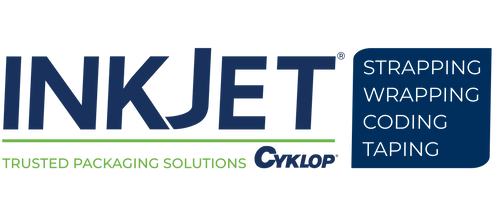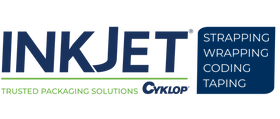The Benefits of Laser Coding on Packaging
Product coding is an essential part of countless manufacturing and packaging workflows. Throughout different industries, alphanumeric text, traceable codes, machine-scannable markings, and logos/images are frequently placed on primary and secondary packaging to comply with:
- Distribution network policies
- State and federal regulations
- Internal processes
Properly applied product codes fulfill a number of important roles, including supply chain traceability, inventory management, and retail processing. Certain products (e.g., infant formula, drugs, etc.) must also display important consumer information to comply with FDA regulations. Due to these reasons, product codes frequently appear on:
- Aerospace parts
- Food packaging
- Beverage bottles and cans
- Chemical packaging
- Personal care products
- Cannabis and CBD products
- Pet food packaging
- Wire and cables
- Electrical components
- Pharmaceutical packaging
In these industries and others, companies have increasingly utilized laser marking technology to complete their coding applications.
For many operations, laser coding on packaging provides numerous benefits that other technologies do not. Below, we explore these benefits in-depth.
The Advantages of Laser Systems
As a high-speed coding technology, laser systems are frequently used by industrial operations to complete high-volume product marking.
When positioned on bottling, canning, or other packaging/manufacturing lines, laser coding systems are capable of marking thousands of products a day with:
- Alphanumeric messages
- Lot codes
- Batch numbers
- Date codes
- Barcodes
- QR codes
- UDI markings
Laser systems have many advantages, as they can enhance operational efficiency, reduce ongoing costs, and improve code appearance.
Excellent Operating Efficiency
In addition to high-volume product coding, laser systems can create intricate logos and stark images on both moving and stationary substrates. Most high-definition marking solutions are only capable of marking passing materials. Laser’s ability to mark both moving and stationary substrates is particularly advantageous for aerospace companies, automotive manufacturers, metal shops, and other operations that may need to complete marking applications away from the production line.
Depending on the resolution requirements and parameters of the application, laser marking systems can complete these markings at faster speeds than most inkjet printers. For instance, InkJet, Inc.’s laser coding systems offer a maximum marking speed of 2,000 characters per second—a faster rate than many TIJ and CIJ printers can match.
InkJet, Inc.’s available systems include:
- F8100C CO2 marking machine
- F8100F fiber laser marking machine
- U8100U UV laser marking machine
- LDR 7100 laser marking machine (a CO2 system specially designed for beverage packaging facilities)
These various systems create beams at different wavelengths, which influences their compatibility with specific substrates. If you are interested in adopting a laser marking system into your operation, follow this material compatibility guide to see which laser technology will work with your materials:
|
|
|
|
|
|
|
|
|
|
|
|
|
|
|
|
|
|
|
|
|
|
|
|
|
|
|
|
|
|
|
|
|
|
|
|
|
|
|
|
|
|
|
|
|
|
|
|
|
|
|
|
|
|
|
|
|
|
|
|
|
|
|
|
|
|
|
|
|
|
|
|
|
|
|
|
|
|
|
|
|
|
|
|
|
|
|
|
|
|
|
|
|
|
|
|
|
|
|
|
|
|
|
|
||||
Reliable Code Quality
Beyond high efficiency, laser systems are also known for exceptional marking results. Compared to the markings produced by other industrial coding solutions, laser-produced codes often feature:
- Higher contrast levels to boost readability and enhance machine scannability
- Sharper lines with no threat of code smearing or smudging
- Better consistency in terms of code size and position
- Longer code life spans due to high resistance against various elements including light, heat, moisture, and chemicals
In general, laser markings look better and last longer than printed codes because they are not just placed onto a substrate’s surface. Instead, laser markings become part of the substrates themselves.
Unlike laser etching or engraving, the laser marking process does not remove a significant amount of material from a substrate. Laser marking uses less power than etching and engraving in order to alter a substrate’s surface without creating a cavity. Using this method, laser coding systems can produce sharp markings that offer better resistance and longer life spans than conventional codes.
Minimal Ongoing Costs
Fiber, CO2, and UV laser systems all have higher upfront costs compared to inkjet printers or case coders. However, they make up for the higher investment with low ongoing expenses.
Inkjet printing systems obviously require a steady supply of ink to create codes. If you use a continuous inkjet printer, you will also need make-up/solvent cartridges to mix with the ink to create a printable mixture. Over time, these fluid costs add up, especially if you are running a high-volume operation in a hot, humid facility.
Many printing systems also require annual servicing to maintain proper operation. Continuous inkjet printers, thermal transfer overprinters, and high-resolution case coders are just some of the printing solutions that require close attention and periodic professional maintenance.
Aside from the occasional filter change and wiping of the lens, laser systems have little or no operating expenses or major concerns. As long as you follow basic startup/shutdown procedures, clean the machine when appropriate, and use the unit as directed, your laser system will operate well for years without substantial operating costs or maintenance requirements.
Want to Learn More About Laser Coding on Packaging? InkJet, Inc. Is Your Source for Laser Marking Technology
Laser coding systems offer the fastest marking speeds and highest reliability of all marking solutions available today. Fiber, CO2 and UV lasers enable users to mark their products with high-quality images, scannable codes, and stark messages in both stationary positions and on high-speed production lines. With minimal maintenance needs and no consumable requirements beyond periodic filter replacements, laser coding systems are the ideal marking choice for industrial-scale operations.
If you are thinking about adopting laser technology into your operation, InkJet, Inc. is here to help. We carry numerous laser systems to meet the needs of various industries and complete diverse applications. Call us today to discuss which laser option will work best for you.
For more information about the benefits of laser coding on packaging, contact InkJet, Inc. online or call 1(800) 280-3245.



